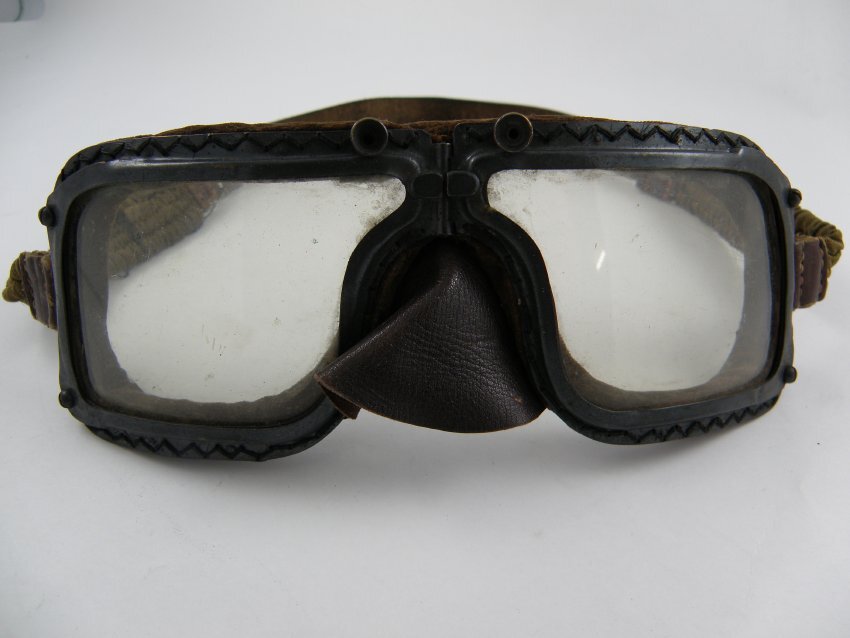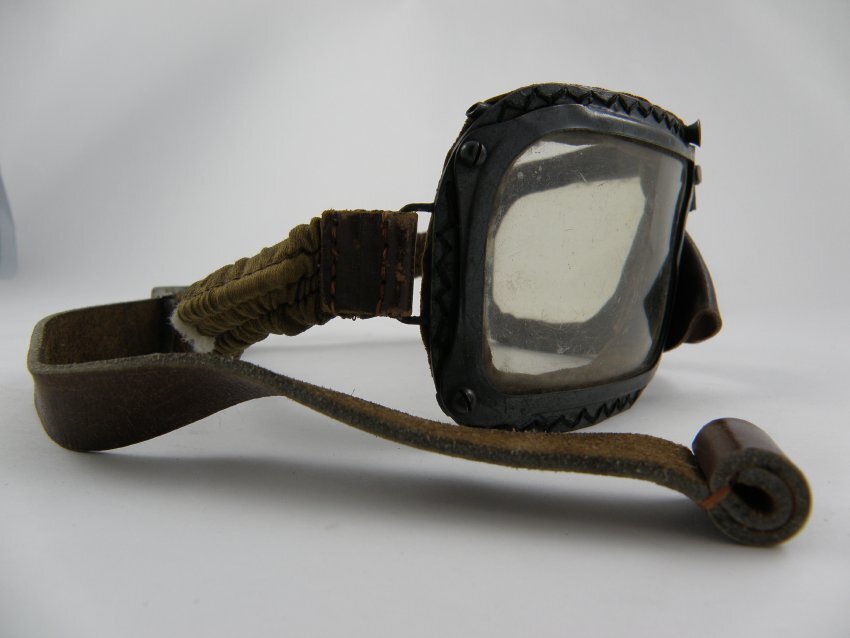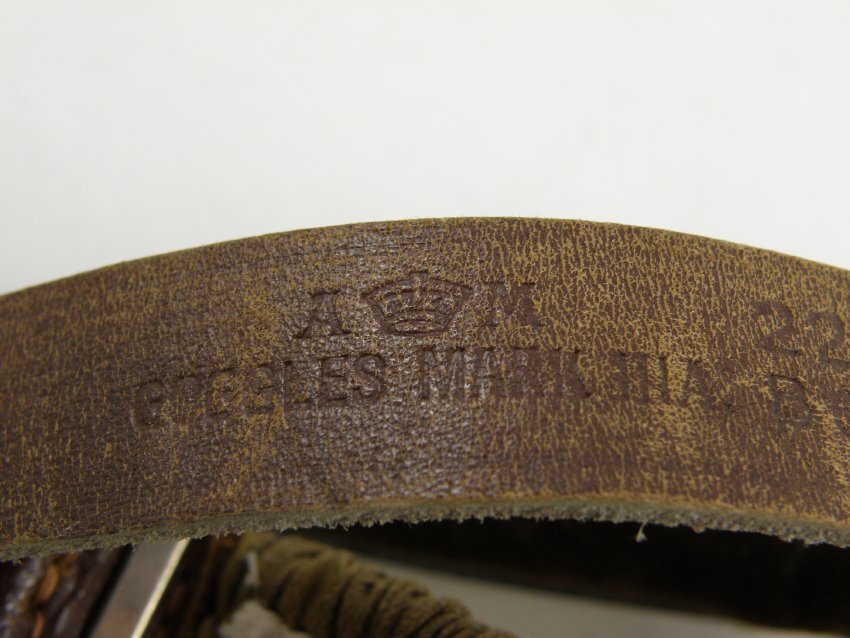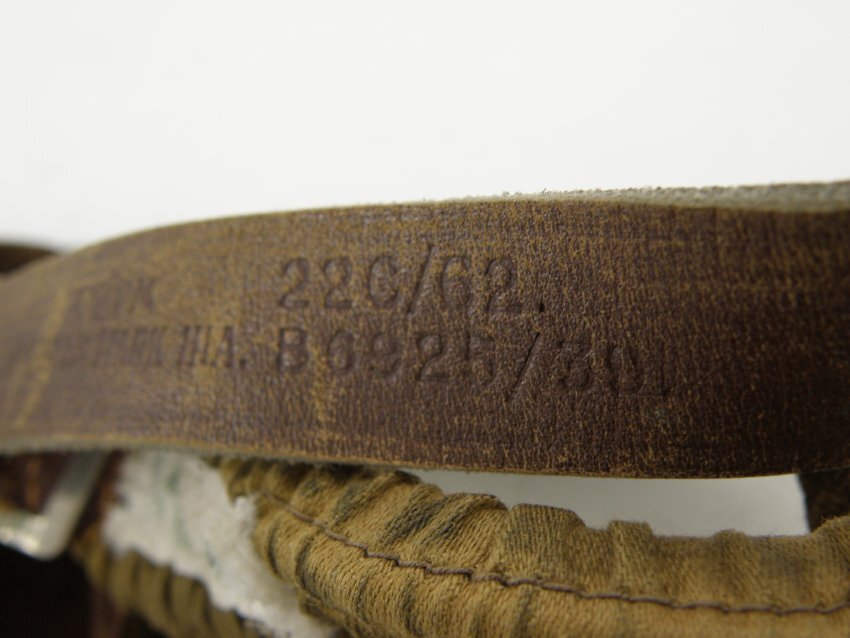MkIIIa Flying Goggles
Item
Title
MkIIIa Flying Goggles
Description
Flying Goggle, Air Ministry MARK IIIA Circa. 1939 Leather back strap is stamped with, 22c/62, B 6929/39 Perspex lenses, with air vents, and black painted brass frames stitched onto brown velveteen backing. Centre hinge, leather nose cover, elastic and leather sprung back strap. Nearly identical to the Mk III goggles, except that the Mk IIIa was intended for use in a more temperate climate and in aircraft with enclosed cockpits. The leather surround to the goggles was removed and the air vents are larger and trumpet shaped. The appearance of the MkIII and MkIIIa owe much to Art Deco fashion rather than to practical use in aircraft. The curved celluloid lenses instead of flat safety glass not only distorted the pilot's vision but also made them highly vulnerable to scratching. Some Battle of Britain pilots were said to not wear their goggles resulting in serious injuries and casualties.
Date
Identifier
984.535
Provenance
This pattern was introduced in 1935, issued to the RAF and RCAF, it is synonymous with the Battle of Britain. When Great-Britain entered the war, most of their flight gear was outdated and intended for wear in open cockpit aircrafts. Also, because the goggles had been developed independently of the Type B flying helmet, the strap arrangement did not work well with the large domed ear pieces fitted to the helmets. Some pilots chose to buy their own flight gear and that is a reason why Battle of Britain period pictures show non-military issue flight gear. This was certainly the case with helmets and goggles, for example Luxor was a civilian manufacturer but the Luxor goggles soon became well known among aircrew. The RAF issue flying goggles were much heavier and not as comfortable as the Luxor goggles and soon the AM started to alter their goggles according to the pilots needs. So the goggles started to change from heavy and large face-covering goggles to lighter and less covering goggles later on.






